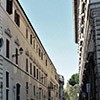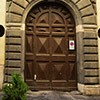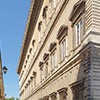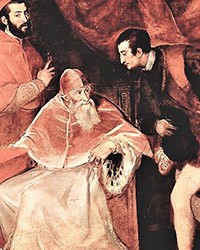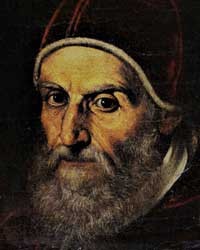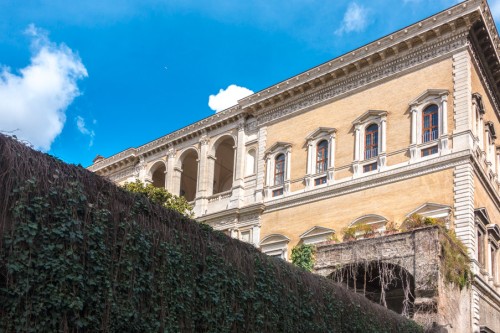
Palazzo Farnese, view from via del Mascherone
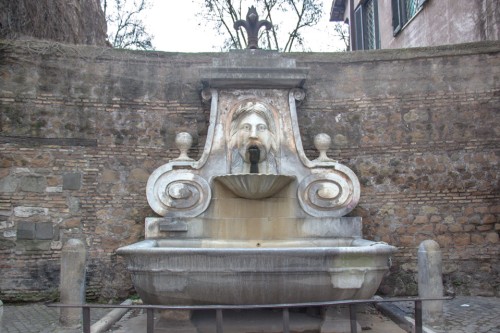
Via Giulia, the fountain del Mascherone at the end of via del Mascherone
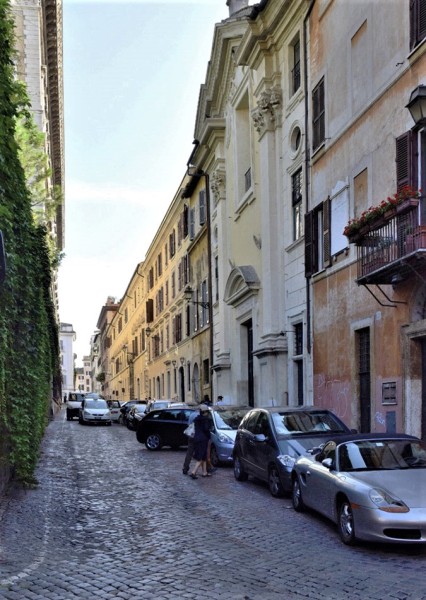
Via del Mascherone, view from via Giulia, pic. Wikipedia
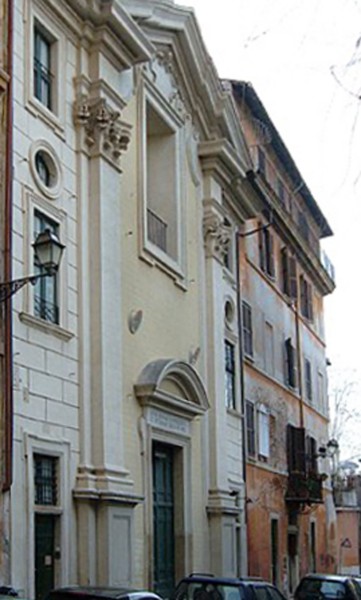
Via del Mascherone, facade of the Church of Santi Giovanni e Petronio
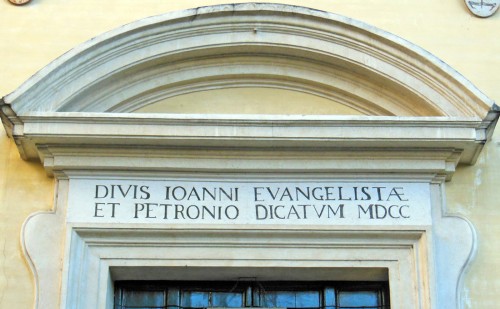
Via del Mascherone, door lintel of the Church of Santi Giovanni e Petronio pic. Wikipedia
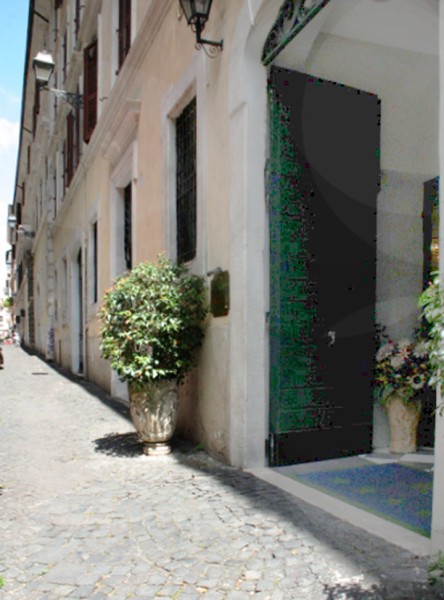
Via del Mascherone, entrance to the Residenza in Farnese (former Bolognese hospice)

Via del Mascherone, view from Piazza Farnese
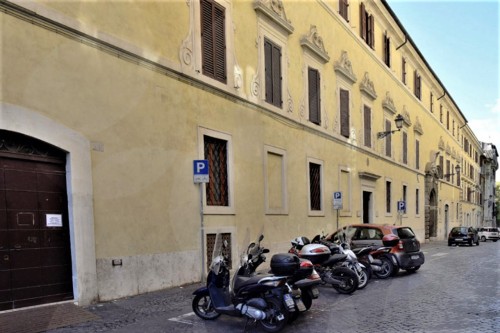
Via del Mascherone, Congregation of the Sons of the Most Holy Mary of the Immaculate Conception (former hospital of the Order of the Hospital of Our Lady of the German House)
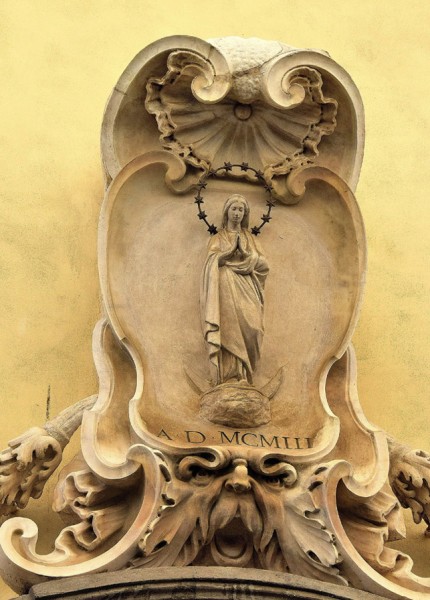
Via del Mascherone, cartouche above the entrance to the Congregation of the Sons of the Blessed Virgin Mary of the Immaculate Conception

Via del Mascherone, portal of the main entrance to the Congregation of the Sons of the Blessed Virgin Mary of the Immaculate Conception
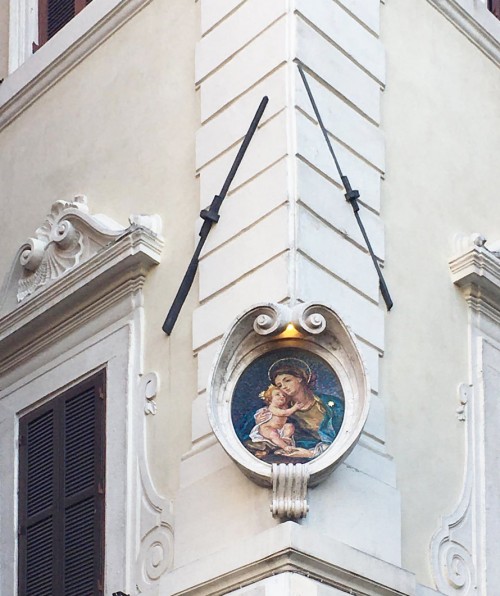
Madonella at the corner of via del Mascherone and Piazza Farnese

Via del Mascherone, Palazzo Farnese on the right
Leaving behind the picturesque Fontanna del Mascherone, located at the via Giulia, we enter onto a narrow street perpendicular to it, which gets its name from that very fountain. It is worth devoting our attention to the several buildings found near it, and transporting ourselves to distant times, when the Farnese Palace was not yet built, while this area – sparsely populated due to floods, which occurred very frequently was used mainly by the poor and the infirm.
Leaving behind the picturesque Fontanna del Mascherone, located at the via Giulia, we enter onto a narrow street perpendicular to it, which gets its name from that very fountain. It is worth devoting our attention to the several buildings found near it, and transporting ourselves to distant times, when the Farnese Palace was not yet built, while this area – sparsely populated due to floods, which occurred very frequently was used mainly by the poor and the infirm.
However, before we do this let us take a closer look at the buildings currently located there. The entire left side of the street is occupied with a garden hidden behind a high wall and the dignified body of the Palazzo Farnese – the enormous residence of the influential Roman Farnese family, which was built in the XVI century – a work of noteworthy architects starting with Antonio da Sangallo and ending with Giacomo della Porta. However, we are interested in that which is located on the right side of the street. Our attention will probably be drawn to the small, tucked into the condensed line of façades, church. Its story begins in the XI century when upon the ruins of a Roman house (from the I century A.D.) a small square church dedicated to St. Thomas the Apostle was built, while in the XIV century, a hospital was erected next to it. Both of the buildings belonged to Spanish clergymen until the second half of the XVI century, when Gregory XIII took it away from the Spanish, reportedly due to their careless management, and turned it over to the Archconfraternity of Our Lady of Consolation and Cincture in Bologna, with which the pope (from this very city) maintained very good relations. The activities of the Archconfraternity focused on care for the poor and the infirm. The dedication of the church was changed giving it over to the care of St. John the Evangelist and the patron saint of Bologna St. Petronius (Sant Giovanni e Petroni). Members of the Archconfraternity enthusiastically began the modernization of the church, creating a small oratory and a shelter for their countrymen visiting Rome. However, these works lasted a long time, and they were concluded along with the unveiling of a new façade at the beginning of the XVIII century. The interior of the church is not known for its rich furnishings as it was often robbed and damaged. It is well to recall that it was here that the funerary monument (unfortunately destroyed) of the great Baroque sculptor the Bolognese Alessandro Algardi completed by his student Domenico Guidi was found. The most important treasure of this church was however the altarpiece completed by Domenichino (Madonna and Child with St. Petronius and St. John), which after the church was desecrated by the soldiers of Napoleon Bonaparte was stolen and later recovered after nearly one hundred fifty years and today is found in the collections of the National Gallery in Palazzo Barberini. Currently, there is a charity organization active in the church which provides aid to the needy, not only with a hot meal but also a conversation and mental support.

Moving on, at number 59 we will find a broad façade of the former hospice designated for the Bolognese, which today is a luxury hotel (Residenza in Farnese). It neighbors another building with an equally long façade, a beautiful entry portal, and an interesting history. It was here, at number 57 that in the XII century, a hospital was established for pilgrims coming from Germany. Its owners were the militaristic monks from the Order of the Brothers of the German House of St. Mary, commonly referred to as the Teutonic Order. The building remained in their care for a long time, namely until the end of the XVII century when it was sold to the Austrian emperor Leopold. At the beginning of the XX century, the structure came under the ownership of a Genoa-based congregation, supported by the pope, which occupied itself with providing for poor boys aspiring to become clergymen (Sons of the Immaculate Conception), and it remains in its possession until today. The immaculate Virgin Mary can be seen in a medallion of the beautiful avant-corps, which was created in the XVII century, similar to the stuccos adorning the fourteen windows of the first floor decorated on the sides with delicate volutes and architraves, while at the base enriched by volutes with a centrally placed shell motif.

Here is where the via del Mascherone ends – in front of us stretches the view of a beautiful square – Piazza Farnese with two fountains adorning it (Fountains from Piazza Farnese).
The name of the street comes from the mascaron adorning the fountain found on its axis, but it was not created until 1626. So what was the name of the street earlier? Chronicles say that it was known as via di San Tommaso de Spanis (or Ispanis) or via San Tommaso della Catena. And while the first name is connected with the original patron of the church and its Spanish supervisors, the second is more mysterious. Perhaps, the aforementioned chain (catena) is connected with the chain with the aid of which the ferry enabling passage across the Tiber moved. A legend, which definitely is more stimulating for the imagination but lacks any supporting evidence, connects the chain with the fraternity of the Disciplinati di Cristo established by the Franciscan Raniero Fasani whose members during a procession, dressed in sacks, would whip themselves with burning hot chains, in this way repenting for their sins.

Therefore, it is enough to stand at the end of the street by the present-day Farnese Square and transport ourselves to the former Rome, see the waves of the river, the yellow sand upon its shores, and the modest hospital buildings of the Teutonic Order, and the equally modest church as well as the parish of the Spanish priests from hundreds of years ago, and perhaps we will be able to hear the cries of the repenting sinners and the wails of the ill and dying pilgrims who at the end of their pilgrimage found themselves in this very place.



















